For a legion of programmers, RED DEAD REDEMPTION 2 is the culmination of almost a decade’s worth of personal investment and labor. For fans, the game holds the unlimited potential that all new, huge games have. That they could be the ur-game, the last game they ever play. A game so rich with content, detail, and action that it could sustain someone for a lifetime. This may very well be true, depending on the player, but even more significant is RED DEAD REDEMPTION 2’s contribution to the open world genre. Its precise refinement of longstanding ideas, its rebuke of others, and the uncomfortable ease with which it reveals real problems with the genre and larger ones of its industry.
For a long time, the “story” of open world games has always been one of scale. Creators and the publicists that guard them point their fingers towards some indistinct spot in the distance and say, “See that mountain over there? You can climb it.” It’s telling that the place they want us to be is across some great vertical distance. It’s vague and far away, and the hope is that the idea of it, that it’s possible at all, will be just as distracting as the journey to get there. These are distractions from the hollowness of the idea, from the hollow center of their simulated worlds. The question of whether open world games should chase “scale” or “depth” is one that’s often invoked around the release of a large-scale endeavor like an ASSASSIN’S CREED or a GRAND THEFT AUTO (and something we’ve chewed on in this very publication). These games are large, they require time to get through. They layer system over system (hunting for pelts, driving cars, running real estate scams, solving ancient Egyptian riddles), mechanics both developed and underdeveloped, that when interacted with and in conjunction with each other, communicate some sense of place. This is scale. Enormity wielded to overwhelm the player. The scope of the features designed to match the scope of the world.
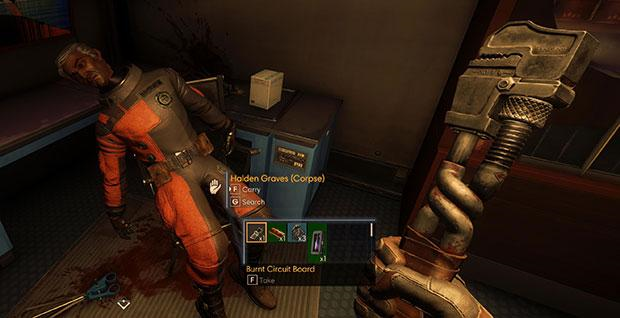
Immersive sims are a key example of depth in gameplay functioning in a quasi-open world
Depth would be the alternative. What if the games weren’t large, but instead deep? This doesn’t have to mean philosophically resonant or thematically moving (though both are always welcome), but rather introspective. Concerned with what’s going on “nearby” and “inside” rather than on the other side of a mountain range. The deep open world game might be something like “One-Block RPG,” a game idea famously toyed with by storied game director and narrative designer Warren Spector.
Spector is responsible for several large scale games, most famously DEUS EX and THIEF: THE DARK PROJECT, but “One-Block RPG” is different because it turns the obsession with simulation and sense of place inwards. Instead of a simulated Europe (ala THE WITCHER 3: WILD HUNT), why not a single castle or village? The story would come from complex interactions in a small detailed world, rather than a huge space and violent conflict. There’s problems with this approach too. While depth might get closer to capturing what a world might really be like (the right kind of reality, details surrounding character and modes of living rather than objects and how they can be used to kill), it begins to become limited by larger existential problems: mainly, its existence as a game.
A large and unwieldy claim (perhaps open-world in its inspiration), so a detour is necessary. What is the point of an open world game? Or any game at all for that matter? Like other artistic mediums, they communicate experience, ideas, and emotions among many other things. It would seem that an open world game would be especially equipped to communicate ideas about worlds, large and small, perhaps most importantly our world, since we live in it and can most readily speak to it. Accepting that (games requesting things of us just as we request things of them), we can assume that open world games might demonstrate how that world is and how it could be. This requires empathy, an understanding of or willingness to try and understand, the people who make up a world. What they do and how they do it. How it makes sense in the context of the beautiful vistas and sprawling cities. It is not a bold claim to say that most open world games fail at this very thing.
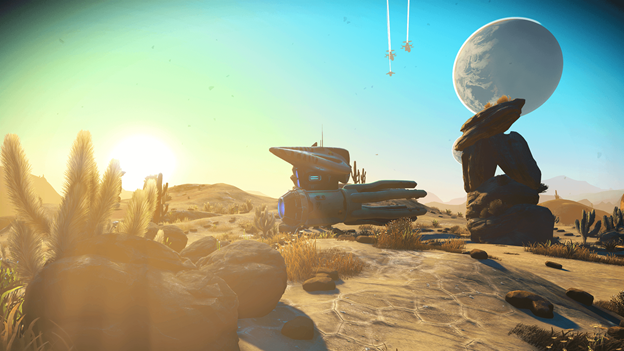
NO MAN’S SKY still fascinates even if the creatures and plants feel familiar
To better understand this, consider the two sides of the spectrum (scale and depth) and the games that fall along it. On the far side of scale is NO MAN’S SKY, a fascinating concept for an open world. A universe generated at random, populated with what could seem to be an unlimited variations of flora and fauna. A huge realistic universe for roleplaying and small-scale storytelling. There are limitations to this, of course, and I’ve spoken about them before, but worse, NO MAN’S SKY seems guilty of leveraging scale. One of the most attractive features of the game is the idea of an in-game universe approaching the actual size of the real-life universe. You don’t have to play the game long to realize how often plants, animals, and quests repeat themselves.
This might be realistic in terms of real-life genetic diversity on planets that can actually support life, but it does not readily make for an interesting or compelling open world (Spector also preempted this game, creating a prototype Mars-set open world exploration game that was boring BECAUSE of how big it was). For RED DEAD REDEMPTION 2, this size is tempered, but the scale of its world is more detailed than NO MAN’S SKY could ever be, with unique animations and states for almost everything in the world.
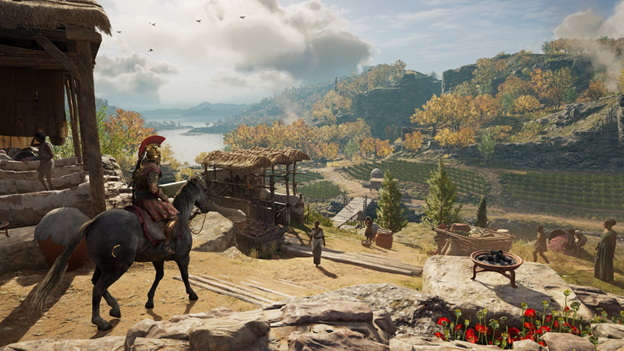
Exchanging Egypt for Greece did nothing to stifle the lushness of ASSASSIN’S CREED’s world
Further down the line, ASSASSIN’S CREED: ORIGINS (and its sequel/prequel ODYSSEY) tries to strike more of a balance. The Egypt of ORIGINS is large (I’d argue too large), with a portion of it’s map devoted to a uninhabitable desert. Life crowds around the sources of water in the game and the life feels like it has some depth to it. Villagers have routines, tending to their farms or cleaning their homes, wandering to a marketplace and back, participating in spaces with other NPCs. Playing as Bayek, a relatively selfless character whose role in society is to intuit and resolve problems, the world feels more alive. There’s a baked-in empathy for the people of Egypt, with sidequests introducing you to citizens up and down the strata of Egyptian society. These characters might not always be named, but the fact that they need things and seem to be on their own missions and quests better create the illusion that the world is alive and might actually matter.
There’s still an imperfection here. The main storyline of the game actively takes you away from the small-scale interactions with everyday Egyptians, and the game also seems to, for better and worse, fetishize its commitment to realism. ODYSSEY only increases the problem by complicating the systems and making the map and game even longer. ORIGINS and ODYSSEY share the most similarities to RED DEAD REDEMPTION 2 in terms of depth and scale, but RDR2 differentiates itself with its cinematic aspirations (however misguided) and the rigor of its story. There’s self-seriousness and a commitment to genre, when ASSASSIN’S CREED favors fun above all else.

This Marvel-ized New York City is satisfying to travel through, challenging but surmountable
MARVEL’S SPIDER-MAN is a unique outlier. It doesn’t try to accurately represent or simulate New York, instead focusing on how Spider-Man’s relationship to his city might be communicated by how enjoyable it is to navigate it. Here scale isn’t necessarily the problem. In comparison to other open worlds, SPIDER-MAN’s New York is smaller and more manageable, even less dense than real life New York. But the game falls short in actually representing something real. There are no people in SPIDER-MAN’s New York. There are bodies that amble around and react when you fall on them, but there are no people with routines or personalities or any meaning to their existence. There are pedestrians in this New York because the real life New York has pedestrians, not because the game has any interest or use for them outside of set dressing. There’s not a huge commitment to scale, but unfortunately there’s not much of a commitment to depth either. What SPIDER-MAN has is its mechanics and mobility, which share a similar importance to shaping RDR2’s world. Movement, in particular movement that requires thinking and adapting to initially obtuse controls, can communicate a world and make the player think about what a space means to them.
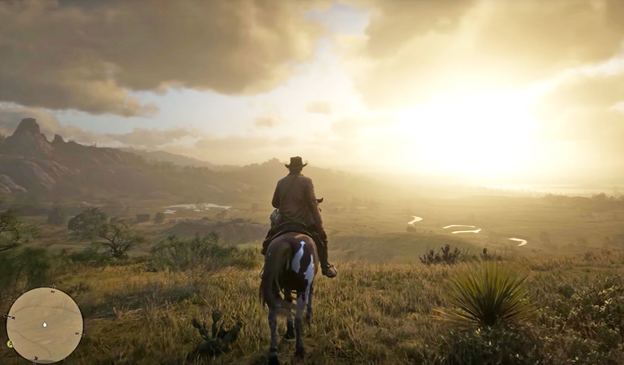
The world is big, the horse is finicky, but the combination of the two does conjure deep feelings about the terrain
At the bottom of the drain, and broadly in the middle of the spectrum, is RED DEAD REDEMPTION 2. RDR2 is a game that is somehow over-committed to both scale and depth, featuring countless game systems, custom animations, detailed landscapes, and people. It actively wants players to interact with the world, voicing and animating every NPC, but bizarrely distilling every interaction into one of two kinds: “greetings” and “antagonizations.” The goal seems to be to make the game feel like another place. Its slowness (designers might prefer deliberateness) and complication make a world that a player might not feel completely at home in, one where they have to consider how to act and communicate to get the game to do what they want. In that way, the game might be a world that runs parallel. A place that is visited.
Generating that feeling is admirable, but the world exists to serve the player. The NPCs are there to serve, to be killed, robbed, greeted and antagonized. RDR2 could get the closest to striking a balance between scale and depth, but it wouldn’t matter, because to represent a world, to create a true open world, would be to recognize that other things have autonomy outside of the player. Not the illusion of a routine or a life, but the ability to make choices. This is why empathy is important, and why open world games can be fun but ultimately hollow exercises in creating meaning. They don’t care about anything other than the player. It’s unfortunate that a lack of empathy seems to be reflected (really, projected) by the people who made the game.
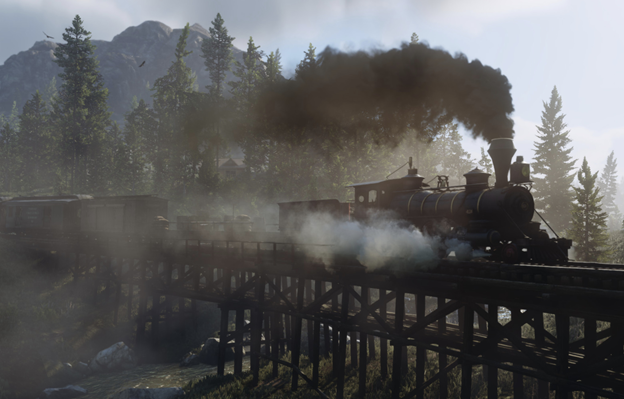
And yet the wheels keep turning
What’s the remedy? What fills this hole? Is a “good” open world possible? That remains to be seen. Perhaps a multiplayer open world game might get closer to one where all characters have agency and matter. The NPC-less design of FALLOUT 76, for instance, could have potential. This is why comparing RED DEAD REDEMPTION 2 to the games that came before it and the games that come after is important; the title wrote a huge check that came at tremendous costs, both virtual and real, and the player has to decide if it, and the genre, is worth it.
As games more readily question the intentions of their players, the obsession with violence and the futility of revenge, so too should players question the places they play in and the conditions they were made under. That point in the distance is indistinct not just to distract you, but because more so than any other art form, games display the exploitative heart of capitalism. The scale and depth of these worlds grow and grow, not just because artists are getting better at capturing reality, but because capitalism accepts nothing other than growth. More products, more customers, and more money. This is the inescapable truth, and its cost is the lives and health of the artists who make games. There are other ways to make things. Art does not in fact need to come from suffering. Maybe a “good” open world doesn’t matter if companies refuse to make them through any other methods other than exploitation and wage theft. There are many reckonings coming. Maybe not everything should survive them.














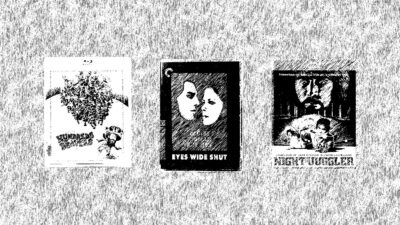

Comments